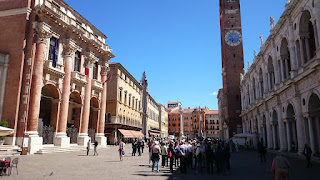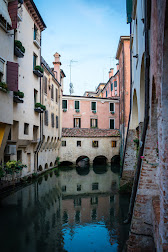Laura Betti - actress and jazz singer
Long-time companion of director Pier Paolo Pasolini
The actress and singer Laura Betti, who appeared in a number of important Italian films in the 1960s and 1970s, including Federico Fellini’s La Dolce Vita, Bernardo Bertolucci’s Novecento and Pier Paolo Pasolini’s Teorema, was born on this day in 1927 in Casalecchio di Reno, in Emilia-Romagna. In addition to Teorema, which won her the coveted Volpi Cup for best actress at the 1968 Venice Film Festival, Betti appeared in six other Pasolini films as the two developed a special and unlikely relationship. Betti, a vivacious blonde with striking good looks, had no shortage of suitors among the authors, artists, singers and aspiring actors that made up her circle in Rome in the 1950s, but Pasolini was gay and had no interest in her in a romantic sense. Yet he became a regular guest at her apartment near the Palazzo Farnese and she wrote many years later that a kind of love developed between them. They met while he was an unknown poet and it was with her encouragement that he realised his aspiration to become a director. Over time she effectively became his cook and housekeeper. Read more…
______________________________________
Giovanni Guareschi – writer
Satirical magazine editor first used Don Camillo to fill a gap
Author Giovanni Guareschi, the creator of the fictional character, Don Camillo, was born on this day in 1908 in Roccabianca in Emilia-Romagna. The popular stories featuring his famous comic creations, the stalwart Italian priest, Don Camillo, and the Communist mayor, Peppone, have since been made into many radio and television programmes and films. Guareschi, who was christened Giovannino, started his career writing for the Gazzetta di Parma and then became a magazine editor. He was called up to serve in the army in 1943 but was quickly taken prisoner, along with other Italian soldiers, by the Germans. He wrote a secret diary while he was in the prison camp, Diario Clandestino. After the war Guareschi founded a weekly satirical magazine, Candido, where his Don Camillo stories first appeared. He had written the introductory story for another publication but lifted it to fill a gap in Candido at the last minute. His magazine criticised and satirised the Communists but after they were beaten in the 1948 elections he turned his attention to the Christian Democrats instead. Read more…
_____________________________________
Uberto Pasolini - film producer and director
Roman count who found unexpected fame with The Full Monty
The film director and producer Uberto Pasolini, who gained international recognition when his British comedy The Full Monty became one of UK cinema’s biggest commercial success stories in 1997, was born on this day in 1957 in Rome. A nephew of the great Italian director Luchino Visconti, Pasolini worked for 12 years as an investment banker in England before following his dream to work in the film industry, abandoning his career to work, initially without pay, on the set of the David Puttnam-Roland Joffé film, The Killing Fields, in Thailand. Puttnam took him on, at first as a location scout, before Pasolini moved to America to become part of Puttnam’s production team in Los Angeles. He set up his own company in London in 1994 and went on to direct some of his own productions, including the critically acclaimed 2008 movie Machan, based on a true story about a group of would-be immigrants from Sri Lanka who overcome visa problems stopping them from moving to the West by pretending to be their country’s national handball team. Like Luchino Visconti, who was a descendant of the same Visconti family that ruled Milan between the 13th and 15th centuries, Pasolini was from a noble background. Read more…
_____________________________________
The Portella della Ginestra Massacre
Conspiracy theories behind murder of peasants
Sicily and the whole of Italy was horrified on this day in 1947 when gunmen opened fire on defenceless peasants gathered for a Labour Day celebration in the hills above Palermo, killing 11 and wounding more than 30 in what became known as the Portella della Ginestra Massacre. The victims included four children between the ages of seven and 15, who were cut down indiscriminately by a gang of men, some on horseback, who appeared suddenly and began firing machine guns as the peasants, numbering several hundred, congregated on a plain along a remote mountain pass between the towns of Piana degli Albanesi and San Giuseppe Jato, where a Labour Day rally had taken place every year since 1893. Salvatore Giuliano, an outlaw wanted in connection with the killing of a police officer in 1943, was held responsible although many people believed that Giuliano and his gang of bandits were set up as scapegoats in a conspiracy involving the Mafia, wealthy landowners and politicians. The outrage came only 10 days after a surprise victory by the so-called People’s Block - a coalition of the Italian Communist Party and the Italian Socialist Party - in Sicilian local elections. Read more…
________________________________________
Ignazio Silone – politician and author
Socialist leader became famous for anti-Fascist novels
Writer and political leader Ignazio Silone was born Secondino Tranquilli on this day in 1900 in Pescina dei Marsi in the region of Abruzzo. Tranquilli became famous under the pseudonym, Ignazio Silone, during World War II for his powerful anti-Fascist novels and he was nominated for the Nobel prize for literature ten times. Silone’s father, Paolo Tranquilli, died when he was 11 and he lost his mother, Marianna, and other members of his family four years later in the Avezzano earthquake of 1915. Two years afterwards he joined the Young Socialist group of the Italian Socialist Party (PSI), eventually becoming their leader and editor of their newspaper Avanguardia. He was a founding member of the breakaway Italian Communist Party (PCI) party in 1921 and became one of its covert leaders during the Fascist regime, editing their newspaper in Trieste, Il Lavoratore. His brother, Romolo Tranquilli, was arrested in 1928 for being a member of the PCI and died in prison in 1931 as a result of the severe beatings he had received from the Fascist police. Silone went to live in Switzerland in 1930 where he declared his opposition to Joseph Stalin and was expelled from the PCI. Read more…






.jpg)




.jpg)
.jpg)
.jpg)


.png)




.jpg)
.jpg)



.jpg)
.png)
.jpg)

